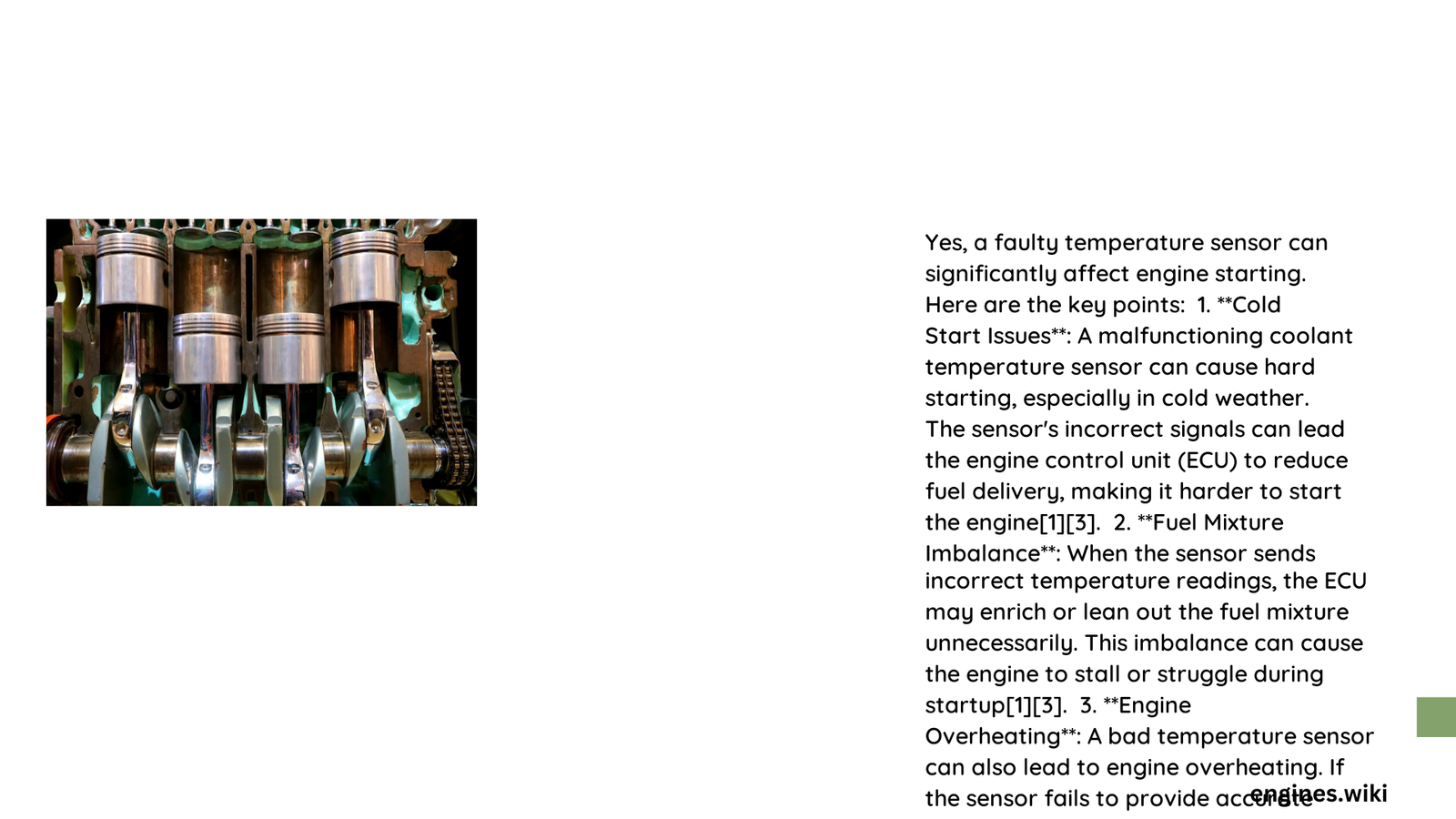A malfunctioning coolant temperature sensor (CTS) can significantly impact your vehicle’s ability to start, creating complex diagnostic challenges for vehicle owners. When this critical sensor provides inaccurate temperature readings, it disrupts the engine control unit’s (ECU) fuel management strategy, potentially preventing smooth engine ignition and causing multiple performance complications.
What Happens When Temperature Sensor Fails?
Temperature sensors play a crucial role in engine management systems by providing real-time temperature data to the ECU. When these sensors malfunction, they can create several starting and performance issues:
How Does Temperature Sensor Impact Engine Starting?
- Fuel Mixture Disruption
- Incorrect temperature readings cause improper fuel-air mixture
- ECU miscalculates fuel injection requirements
-
Results in hard starting or complete start failure
-
Cold Start Complications
- Sensor may prevent proper enrichment during cold starts
- Reduces fuel delivery when engine needs more fuel
- Increases cranking time and potential starting difficulties
Diagnostic Symptoms of Temperature Sensor Problems
| Symptom | Potential Cause | Severity |
|---|---|---|
| Hard Starting | Incorrect Temperature Reading | High |
| Rough Idle | Improper Fuel Management | Medium |
| Check Engine Light | Sensor Circuit Malfunction | High |
| Black Exhaust Smoke | Rich Fuel Mixture | Medium |
Technical Insights into Sensor Functionality
A coolant temperature sensor operates as a thermistor with specific electrical characteristics:
- Resistance Variation: Changes resistance based on engine temperature
- Voltage Signal Transmission: Converts temperature data into electrical signals
- Typical Resistance Range: 180-300 ohms when fully warmed
Diagnostic and Replacement Strategies
Steps to Verify Temperature Sensor Issues
- Use multimeter to check sensor resistance
- Compare readings with manufacturer specifications
- Inspect wiring harness for potential damage
- Verify sensor location and mounting
Replacement Considerations
- Average replacement cost: $20-$100
- Complexity: Low to moderate
- Required tools: Multimeter, socket set, replacement sensor
Prevention and Maintenance Tips
- Regular cooling system inspections
- Monitor engine performance consistently
- Replace sensor at manufacturer-recommended intervals
- Use high-quality replacement parts
Critical Warning Signs
Immediate Action Required When:
– Engine struggles to start consistently
– Unusual temperature gauge behavior
– Persistent check engine light
– Noticeable changes in fuel consumption
Technical Recommendations
Vehicle owners should:
– Consult professional mechanics for precise diagnostics
– Never ignore persistent starting issues
– Understand sensor’s critical role in engine management
Potential Consequences of Ignoring Sensor Problems
- Increased fuel consumption
- Potential engine damage
- Reduced vehicle performance
- Higher repair costs if left unaddressed
Conclusion

A faulty temperature sensor can definitively affect engine starting, creating complex diagnostic challenges. Proactive maintenance and timely sensor replacement are crucial for maintaining optimal vehicle performance.
